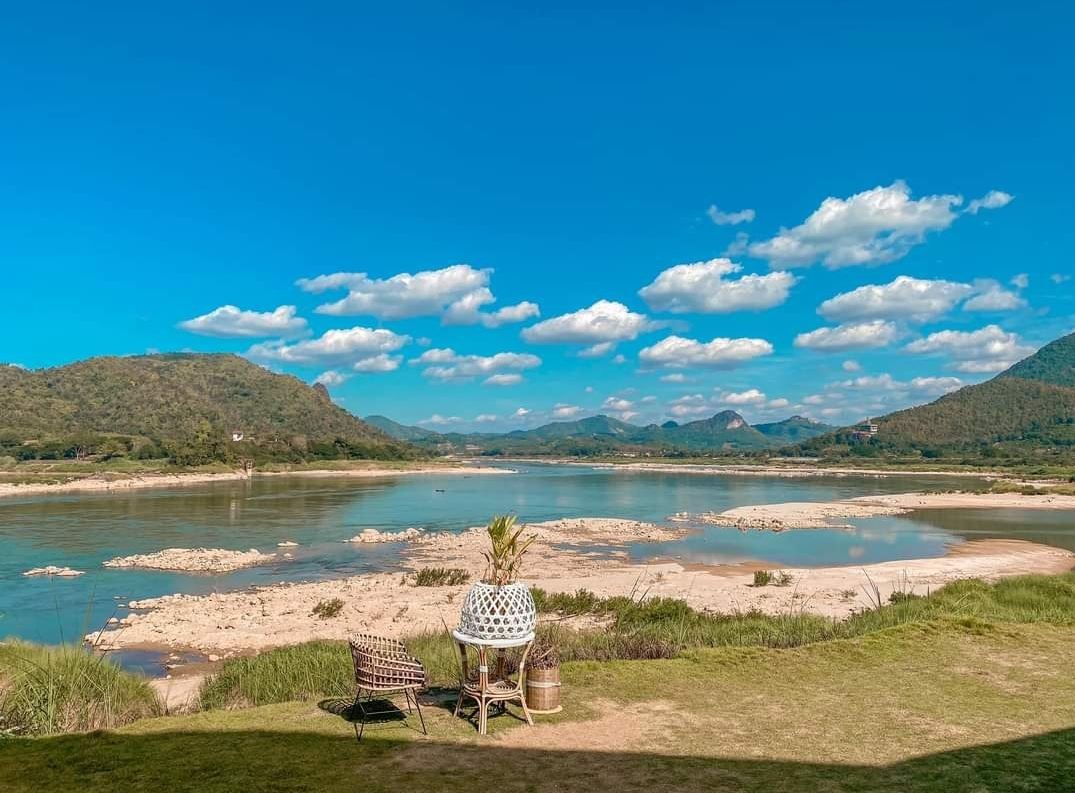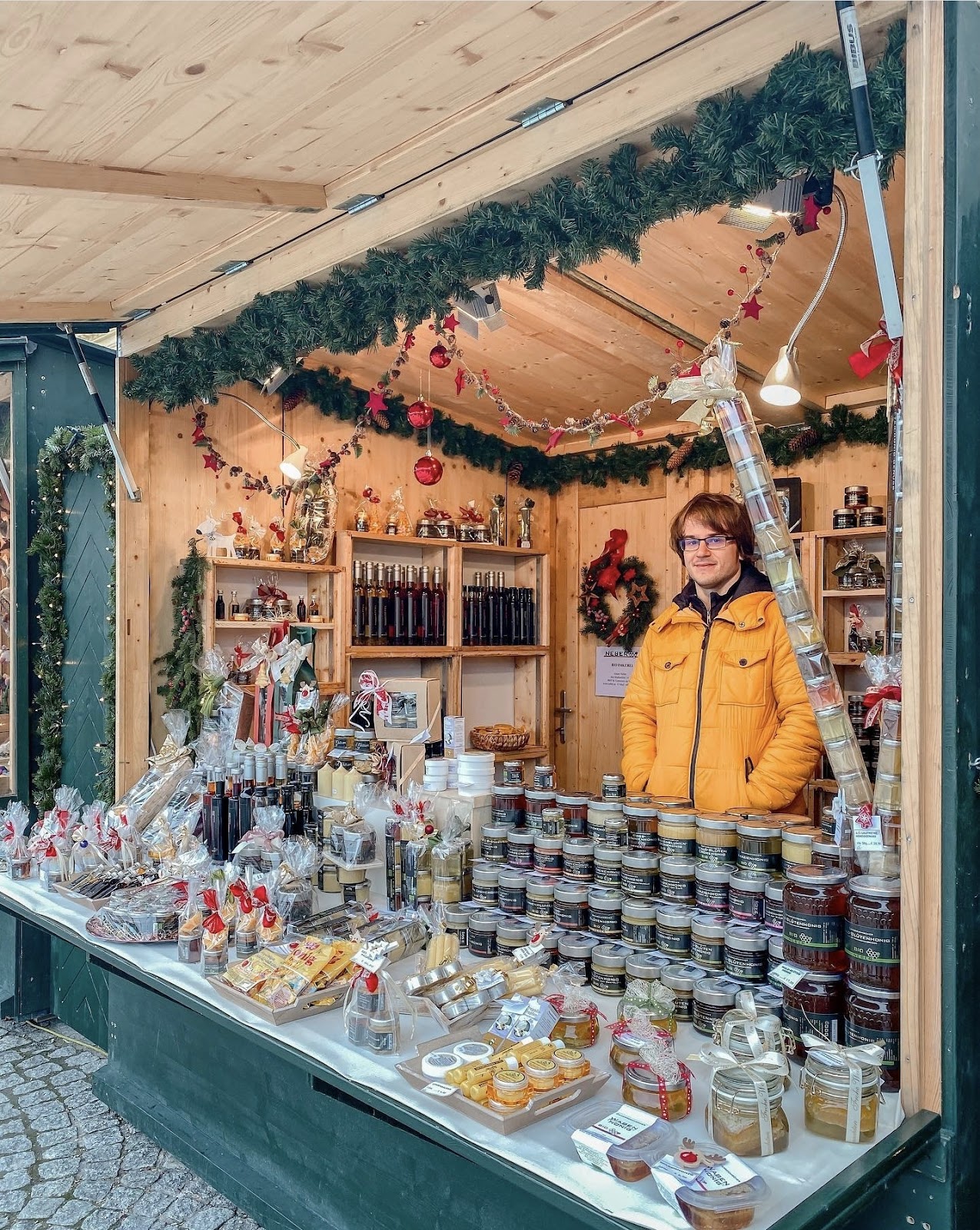slogan:
Chiang Khan, the city of beautiful people, long-grained rice, glass coconuts, beautiful islands and pristine islands cultural site Introducing the Center for the Arts and Crafts
The history of Chiang Khan was originally located in Chanakham, Laos, which was built by Khun Khan. Son of Khun Kua of the Lan Xang Kingdom, about 1400 BC. Later, around 2250 B.E., the Lan Xang kingdom split into two kingdoms: luang prabang kingdom which has King Gisharaj as the king and Vientiane kingdom in which Phra Chao Chai Ong Hue is the king By designating the territory above the Hueang River to be the territory of Luang Prabang. and under the Hueang River down to Vientiane territory Later, Prabang Highway built Pak Hue, which is on the right bank of the Mekong River, as a border city, and Vientiane established Chiang Khan.


2320 King Krungthonburi Please let Chao Phraya the King fight with Surasi. led an army to attack Vientiane Beat Vientiane and therefore summoned the Emerald Buddha. back to Krungthonburi and then united the Lan Xang Kingdom and became the Kingdom of Thailand and forcibly forcibly brought more people to the city of Pak Hueng then graciously Let the city of Pak Hue go up with the city of Pichai. Later, in the reign of King Rama III, Chao Anuwong, the governor of Vientiane Think of salvage independence to separate independence from Thailand by raising forces from Vientiane to seize Nakhon Ratchasima. But in the end, Chao Anuwong was imprisoned until his death. The Thai army, who came to defeat Chao Anuwong in Nakhon Ratchasima, led more troops to forcibly drive people from the left bank of the Mekong to Pak Hue. and graciously Let Phra Anupinat (King Ton Kruea Thongsri) be the first ruler of Pak Hue. and gave the new city the name of Chiang Khan time to the reign of King Chulalongkorn The Chinese Hor had brought an army to attack Vientiane. Luang Prabang and had plundered the former city of Chiang Khan on the left bank of the Mekong River. The former Chiang Khan people migrated to the city of Chiang Khan Mai. (Muang Pak Hueng) a lot

The next time, I saw that Chaiyaphum, Mueang, Chiang Khan Mai (Muang Pak Hue) was not suitable, so most people migrated to Ban Tha Na Chan, which is close to where the current Chiang Khan District is located. and rename it Chiang Khan new town Later, Thailand lost territory on the left bank of the Mekong River to France. causing the city of Pak Hueng to become the possession of France Thai people living in Pak Hueang therefore migrated to the new city of Chiang Khan or the present Chiang Khan District completely. and then changed the name of the city to the city of Chiang Khan Mai has set up an office in the area of Wat That called the City Hall of Chiang Khan Later moved to the area of Wat Phon Chai until the year 1909, the city of Chiang Khan, where Phraya Sri Akkahad (Thongdee Sriprasert) was given the position of the first Chiang Khan District Chief. Chiang Khan District to stay at the present address as long as today


Today, Chiang Khan is known as a cultural tourism city. and the peace of life of local residents Combined with the beauty of the scenery adjacent to
the Mekong River, there are many guesthouses available. There is a walking street for tourists to visit as well.
Chiang Khan District is located in the north of the province. having territories adjacent to the following neighboring territories
The food is traditional and contemporary.
The atmosphere on both sides of the walking street is traditionally traditional.
There is a natural smell.
Chiang Khan, Loei Province is a charming tourist destination. A picture of cycling and enjoying the nature along the Mekong River. See an old wooden house Taste local food buy local products Such a mesmerizing, dreamy, but aside from this, Chiang Khan also has a unique identity in terms of history, culture, tradition, wisdom and local architecture to be studied. much appreciated
Mekong-Salwin Civilization Education Institute, Naresuan University therefore, together with Walailak University Nakhon Si Thammarat The Thai Ecotourism and Adventure Tourism Association (ETA) and the Special Area Development Administration for Sustainable Tourism (Public Organization) by the Loei Special Area Office or DASTA 5 organized the project "Destination Branding" and marketing strategies for tourism in the cultural street community. Old wooden houses along the Mekong and connected areas"


"This project is organized for the restoration, improvement, rehabilitation to maintain cultural attractions to be able to support tourists sustainably. It consists of the development of various tourist attractions, improving the landscape, community, environment. including basic facilities for providing services to tourists to a standard To preserve the lasting value in terms of being a tourist attraction for learning. starting from a meeting to mobilize knowledge opinions of people in the community and related organizations Then it's into the community repository. cultural street to create a route for cultural tourism in Chiang Khan, known as Culdutainment" Assistant Professor Dr. Wasin Panyawuthtrakul Director of the Khong-Salawin Institute of Civilization Studies, Naresuan University mention the origin of the project


Biking to see the old wooden house natural mix Cycling to enjoy the nature along the Mekong. breath of fresh air and admire the old wooden houses The identity that has almost every point in every alley, such as an old cinema, the first hotel of Chiang Khan. The oldest wooden house is The governor's house is over 200 years old, still seeing the original building conditions such as bamboo, basketry, broken bricks, plaster, house roof, etc. Offering glutinous rice alms. Visit important temples. Wake up early and don't have to go to make merit anywhere. Sticky rice sets, dried food and flowers are arranged along the roadside. Waiting for the monks to come for alms full of merit since early morning Then go to visit the temple. The temples in Chiang Khan are all old temples. Most of the temples were built to resemble the temples in Luang Prabang, such as Wat Si Khun Muang, Wat Mahathat, Wat Tha Kok, and Wat Phon Chai.


Another thing is Chiang Khan It is an old community located on a plain. stretching along the Mekong River is a residential area The old trade and commerce of Chiang Khan. Originally, the old community of Chiang Khan play a role as the main trade and commerce of the city of Chiang Khan but now has reduced its role as a commercial district because the original road was narrow and the expansion of the city along the transport routes Born as a new commercial district along the main road with ease of use The current economic system in the community therefore depends mainly on tourism. The social character still has a way of life and culture related to Buddhism and the Mekong River, as can be seen from the division of the community into temples. Most of the people in the old Chiang Khan community were Thais. followed by Thai people of Chinese descent There is an old commercial building. wooden row room and wood-concrete with outstanding characteristics of construction techniques and architectural elements, such as the walls of buildings made of bamboo weave with shell mortar balcony railing door-window and air vents above the doors - windows, etc.
























































